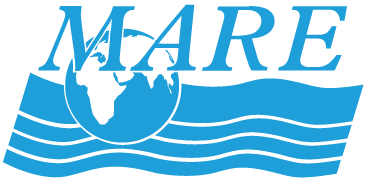Climate Simulation Activities
The following simulations come from the Ocean Sciences Sequence for Grades 6–8: The Ocean-Atmosphere Connection and Climate Change. Each simulation is part of a complete activity or series of activities on a particular topic within the curriculum sequence. However, the simulations are intended to stand alone, independent of the curriculum, as well. Below are suggested activities for use with the simulations independent of the curriculum. If you are interested in learning more about the middle school units from which these simulations were excerpted, please visit the OSS 6–8 webpages.
HTML5 versions of the animations were made possible through funding from the National Marine Sanctuary Foundation, award #16-06-B-00071
Heat Energy and Moving Molecules
The following simulation activities derive from Session 1.1 and 1.2 of the OSS 6–8 curriculum. Through the first simulation activity, students explore thermal expansion of water at the macro and molecular levels. Through the second simulation activity, students begin to explore and compare water’s capacity to absorb and store heat energy in contrast to air.
Simulations:
Guiding Question: How does heat energy affect water?
Guiding Question: How does heat energy affect water and air?
Density of Liquids and Ocean Currents
The following simulation activities derive from Sessions 1.6 and 1.9 of the OSS 6–8 curriculum. Students explore the concept of density, in particular the density of liquids, and how denser substances sink below substances that are less dense. In the second simulation activity, they apply these ideas as they predict, observe and explain density-driven currents in a model ocean.
Simulations:
Guiding Question: Why are some liquids denser than others?
Guiding Question: What causes ocean currents?
Can Climate Change affect Ocean Currents?
This simulation activity derives from Session 3.7. in the OSS 6–8 curriculum. Students use a computer simulation to make predictions about what will happen to sea ice, salinity, and the flow of North Atlantic Deep Water when atmospheric temperature is increased near Greenland. They learn that the temperature of Earth’s atmosphere affects ocean currents.
Students will need to understand that ocean currents are being driven by the concept that denser substances sink below substances that are less dense, and that colder water is more dense than warmer water and saltier water is more dense than less salty water. These concepts are reinforced in the previous simulation activity.
Simulation:
Guiding Question: Can climate change affect ocean currents?
The Carbon Cycle and climate change
These simulation activities derive from Session 2.7 and Session 3.10 in the OSS 6–8 curriculum. Students use this model of the carbon cycle to learn about carbon reservoirs and how carbon flows into and out of these reservoirs. In particular they focus on the amounts of carbon moving between reservoirs through Natural Carbon flows and the Carbon flows due to Human Industry. In the second simulation activity, they explore effects to the carbon cycle, in particular, carbon in the atmosphere and ocean reservoirs, if certain changes are made to human activities. We do not talk about the connection between increased carbon in the atmosphere and climate change here, this is addressed in other sessions in the OSS 6–8 curriculum.
Simulation:
Guiding Question: How does human industry affect flows of Carbon in the Carbon Cycle?
Simulating Changes in the Carbon Cycle
To understand the following activity students will need to understand the carbon cycle, carbon flows and carbon reservoirs, and how it is represented in this Interactive Carbon Cycle simulation, all introduced in the previous simulation activity. They also need to understand that human industry is adding carbon flows to the Carbon Cycle, (in particular, increasing carbon flow to the atmosphere), causing the flow of carbon into and out of the atmosphere to be out of balance. In this activity, students simulate actions humans can take that effect carbon flows into and out of reservoirs, and predict how they might bring the flow of carbon into and out of the atmosphere back into balance.
Simulation:
Guiding Question: How can we change the flow of carbon into the atmosphere?

